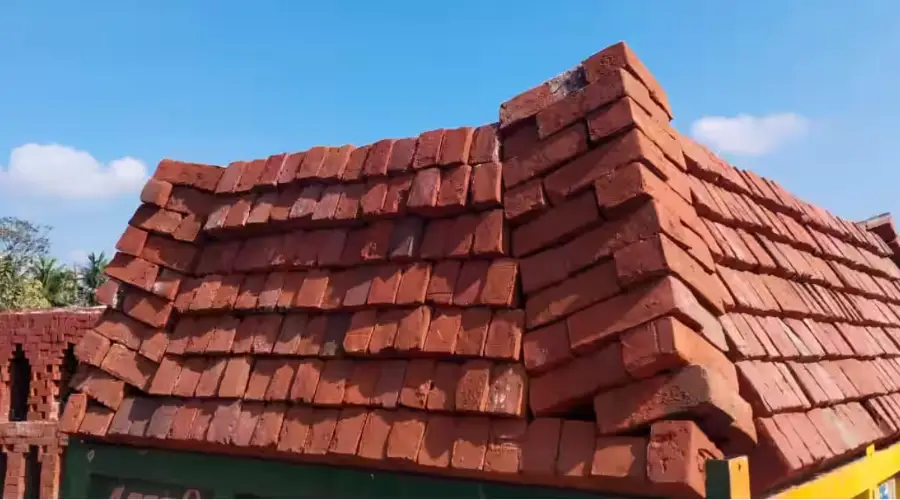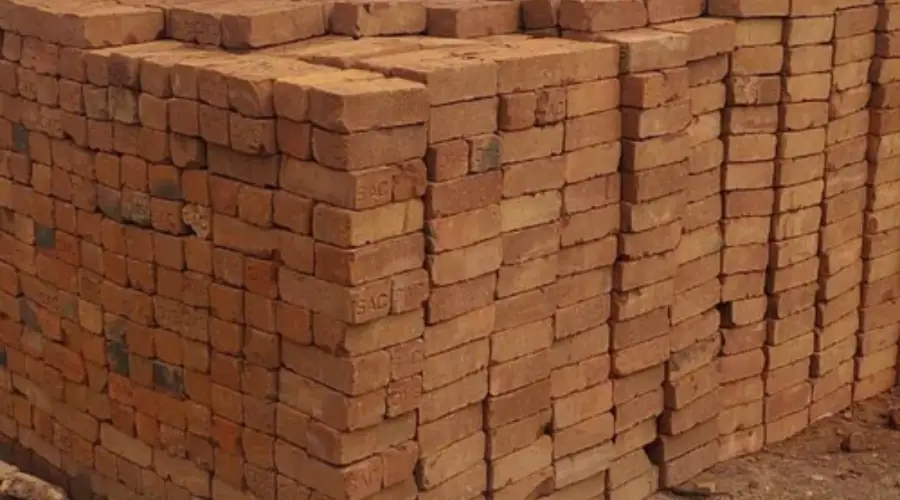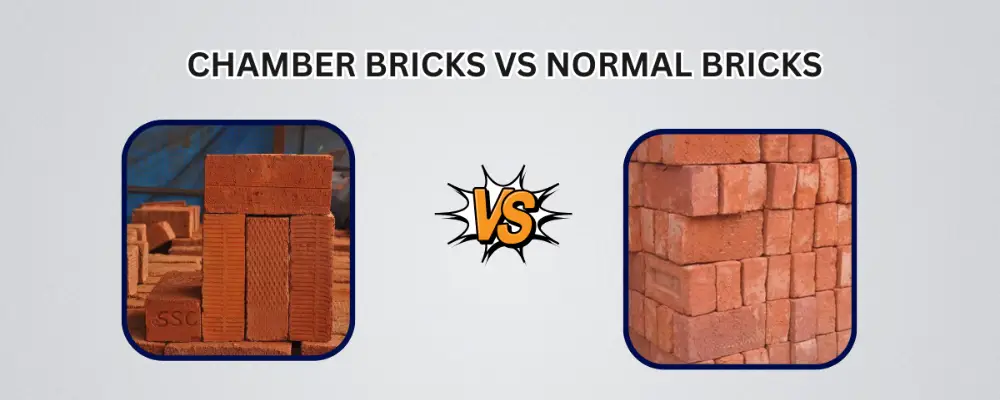Clay bricks are traditional construction materials that have been used for thousands of years. Although they are traditionally made and used, the evolution in the construction industry has resulted in different types of clay bricks based on the manufacturing methods, quality of raw materials and purposes. One such brick is the chamber brick. In this blog, we are going to compare chamber bricks with normal bricks to give a clear outline of which brick type is suitable for your construction.
Overview of Chamber Bricks

Chamber bricks are clay bricks produced in a fire chamber kiln at high temperatures to achieve the necessary strength and appearance. They are similar to normal bricks; however, the firing process differentiates them. Chamber bricks are kept in rectangular or circular chambers and heated at a controlled temperature for even heat distribution. They are uniform in shape, colour, and dimension and have high strength and durability.
Overview of Normal Bricks

Normal bricks, or traditional bricks, are made using clay, sand, and other natural minerals. They are produced by kiln-burning and have high strength, resistance, and durability. They are classified based on grades and are widely used to construct walls, columns, foundations and other structural and non-structural elements of buildings.
Key Differences Between Chamber Bricks and Normal Bricks
Appearance
Chamber Bricks
Chamber bricks are regular and rectangular, with sharp and straight edges. They have a smooth surface, which can be felt on the face of the brick. Depending on the clay and heating process, these bricks are typically red, brown, orange, or yellow in colour.
Normal Bricks
Normal clay bricks have irregular shapes and sizes, with uneven and rough edges. Their surface texture is rougher and uneven. These bricks are generally red, brown, orange, or yellow; however, the colour distribution is inconsistent.
Strength and Durability
Chamber Bricks
The consistency of the chamber kiln burning helps the brick achieve higher compressive strength and reduce cracking and warping. These bricks are highly dense and less porous, protecting the structure from water, fire, and abrasion caused by external forces.
Normal Bricks
Normal bricks are generally strong and durable; however, their strength and durability depend on the grade or quality of the brick. First-class bricks have high load-bearing capacity and high durability, whereas bricks of lower grades are limited in strength and performance.
Thermal and Sound Insulation
Chamber Bricks
Chamber bricks provide moderate thermal and acoustic insulation. Due to their dense structure, they can absorb, maintain, and release heat to a certain temperature. They offer medium insulation to sound, reducing sound to a certain level, but they are not as effective as other soundproofing bricks.
Normal Bricks
Normal bricks have good fire resistance, as they are burnt at high temperatures in the kiln. Class-A bricks offer good thermal insulation to the building and can be used for fireplaces and fire-prone areas. Due to their dense structure, they provide good sound insulation. The lower-grade bricks have moderate to low heat and sound resistance, making them unsuitable for high-temperature areas.
Weight and Handling
Chamber Bricks
The weight of the chamber bricks ranges from 2.5 to 3.5 kg, depending on their size, raw materials, and density. These bricks are uniformly dense and easy to handle. They have a weight similar to normal bricks. The uniform weight distribution provides well-balanced strength and durability to the structure.
Normal Bricks
These bricks typically range from 2.3 kg to 3 kg, depending on their density and quality. Normal high-grade bricks are tightly packed and weigh more than lower-grade bricks. On the other hand, lower-grade bricks are less dense, but prone to more damage.
Applications
| Chamber Bricks | Normal Bricks |
| These bricks are best suited for high-strength requirements and multi-floored buildings. | These bricks are generally limited to low-mid rise buildings. |
| This brick is ideal for all types of foundations, including large-scale projects. | This brick can be used in foundations for low-rise and less load-bearing buildings. |
| The blend of aesthetic looks and durability makes it ideal for external walls. | These bricks are used for basic internal and external applications where they are generally plastered. |
| The high durability of the bricks makes it suitable for heavy traffic areas. | It can be used for basic paving but is not as durable as chamber bricks. |
| It can be used in fireplaces and buildings that demand high thermal resistance. | It can be used in cases of low thermal requirements due to moderate heat insulation. |
| Used for more important structures. | Used for affordable and low-rise residential construction. |
| It can be used to restore historical buildings. | Used for less demanding restoration projects. |
Cost-Effectiveness
Chamber Bricks
These bricks are 15-30% more expensive than normal bricks due to the controlled chamber kiln firing process and the smooth finish. They use high-quality raw materials, and the chamber burning increases the manufacturing cost. Although they have high manufacturing costs, the clear finish and durable properties require less maintenance, thereby reducing the maintenance cost.
Normal Bricks
These bricks are affordable and less expensive than chamber bricks and have low manufacturing costs; however, as they are more prone to damage, plastering and frequent maintenance is required, increasing the maintenance costs in the long run.
How to Choose Between Chamber Bricks and Normal Bricks?
Numerous factors must be considered when choosing the right bricks between the two, such as types of construction, durability, lifespan, strength, performance, aesthetic looks, surface finish, budget, resistance, and environmental considerations. Chamber bricks provide high strength and durability and are expensive, making them suitable for load-bearing, highly durable, and large-scale structures. On the other hand, normal bricks can be used for non-load-bearing, affordable and low-rise buildings.
Conclusion
Chamber bricks are ideal for large-scale projects and highly important construction projects that demand high durability, strength, and perfect fit and finish. On the other hand, if budget is your primary concern and your construction is small, normal bricks could be a wise choice.

